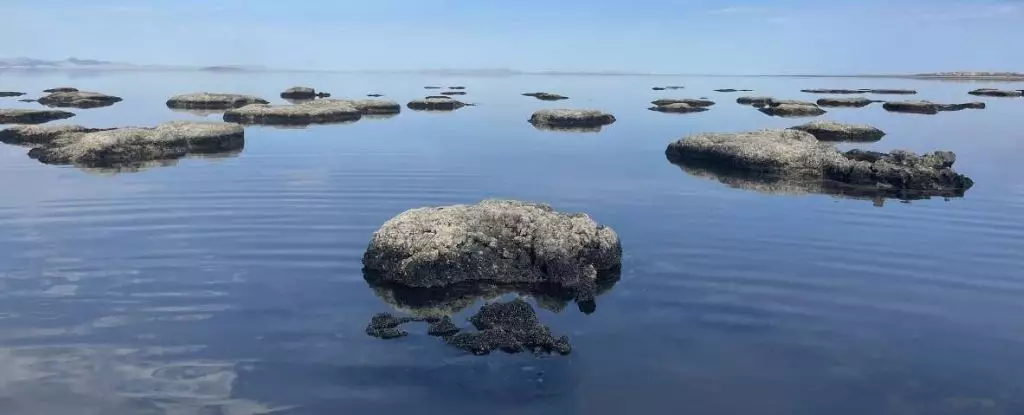In the depths of the Great Salt Lake in the United States, beyond the realm of brine shrimp and brine flies, lies a hidden world of nematodes. For years, scientists believed that only single-celled organisms inhabited the ultra-saline waters of the lake. However, researchers at the University of Utah have unearthed a third form of multicellular life thriving in this extreme environment. These nematodes, hidden beneath the surface of the lake, have adapted to survive in conditions that are three to six times saltier than the ocean.
Biologists Julie Jung and Michael Werner led the team that made this groundbreaking discovery. By examining microbialites on the lake bed, they were able to confirm the existence of various species of nematodes. Previous attempts to find these worms had been unsuccessful, but Jung and Werner’s innovative approach using advanced molecular techniques led to the identification of live nematodes at each site they sampled.
The researchers suspect that these hidden nematodes feed on the bacteria found in the microbial mats of the lake. This unique diet, along with the protection provided by the mats from the harsh environment, allows the worms to thrive in the saline waters. To understand how these nematodes survive, the team conducted experiments using Caenorhabditis elegans, a well-studied roundworm. They found that nematodes fed on bacteria from the Great Salt Lake’s microbial mats were able to withstand exposure to water that was 50 times saltier than their usual habitat, unlike those fed on E. coli.
Despite the fascinating discovery of these novel nematodes, the Great Salt Lake faces a grim future. As water is diverted for human use and the climate continues to dry out, the lake is shrinking rapidly. The exposure of microbial mats to the elements and the increasing salinity of the remaining water pose a significant threat to the unique ecosystem. Werner and Jung had to resort to using mountain bikes to reach certain sites as the lake recedes, highlighting the urgency of the situation. Some experts predict that the lake could collapse entirely within the next five years, putting the habitat of these hidden worms at risk of disappearing forever.
The discovery of these unique nematodes in the Great Salt Lake underscores the importance of studying and conserving this fragile ecosystem. With genetic analyses revealing new nematode species specific to the lake, there is a pressing need to further explore and understand this hidden world before it is too late. As Werner, Jung, and their colleagues emphasize, it is essential to grasp the limits of habitability for these creatures and take action to preserve their unique environment.
The Great Salt Lake serves as a reminder of the vast and diverse forms of life that can exist in even the most extreme environments. The hidden world of nematodes in the lake sheds light on the resilience and adaptability of organisms in the face of environmental challenges. However, it also serves as a warning of the fragility of ecosystems and the urgent need for conservation efforts to protect these remarkable species before they disappear forever.

Leave a Reply